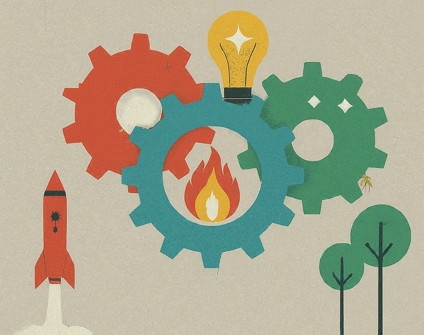In today’s dynamic market, building a stand-out tech product requires a strategic approach. This blog dives into strategies that can propel your product to success. We’ll share actionable insights from our experiences, helping you refine your innovation process and achieve product excellence.
Early Product Releases
Releasing a Minimum Viable Product (MVP) can be a strategic first step. We launched our MVP at Planndu with core features like task creation, reminders, and prioritization, while leaving out more complex functionalities for later development. This initial version went to a select group of users for targeted feedback on usability and desired features.
Their insights were invaluable. We used them to pinpoint areas for improvement and prioritize our development roadmap. We kept users informed about upcoming updates and actively incorporated their suggestions into each iteration. This not only improved our app’s functionality but also fostered a loyal user base who felt appreciated and involved.

Targeting Niche Markets
Seeking out smaller markets where you can make a difference is a strategic approach that can set your product apart from the competition. These niche markets often have specific needs that are underserved by larger competitors, providing an opportunity for your product to shine. Planndu identified segments like personal tasks, freelance projects, and student workflows. With features like status setting, priority levels, reminders, and a Pomodoro timer for these groups, we resonated with a dedicated user base who felt their needs were understood.
Targeting smaller markets can lead to richer user engagement and feedback. These communities tend to be more vocal about their needs and experiences, providing your development team with precise insights for faster improvements. When we launched a version tailored for small non-profits, the concentrated feedback significantly refined our collaboration features. By effectively serving niche markets, you build strong brand loyalty and lay the groundwork for future expansion into larger markets with a well-vetted and optimized product.
Insightful User Understanding
Understanding user pain points goes beyond simply listening to their feedback. It involves analyzing user behavior to uncover hidden needs and preferences. Sometimes, users might struggle to articulate their thoughts or miss key functionalities, leading to incomplete feedback. As a product developer, it’s crucial to delve deeper. Observe how users interact with your product and integrate these insights with their feedback.
For instance, during a recent market analysis, we noticed a discrepancy between user feedback and their actual use of a key feature. Instead of assuming the feature was unnecessary, we observed user navigation patterns and discovered a crucial button’s placement hindered its discoverability. A minor interface adjustment led to a significant increase in feature usage and positive feedback. By combining user feedback with behavioral analysis, you make informed decisions and prioritize improvements that resonate with users’ actual needs. This fosters a deeper connection with your user base, as they see their experiences reflected in the product’s development.

Growth Through Mistakes
Making mistakes is an integral part of growth and learning, both personally and professionally. It’s essential not to feel discouraged by mistakes but rather to view them as valuable opportunities for improvement. In the realm of product development, mistakes can lead to valuable insights, helping you understand what works and what doesn’t, refining your strategies, and ultimately leading to better outcomes.
Our experience with Planndu has included a range of mistakes, spanning from minor interface glitches to more substantial feature misfires. Each mistake served as a lesson, guiding us toward more informed decisions and better practices. For example, a feature update that initially received negative feedback taught us the importance of thorough testing and user validation before implementation. This experience led to a more robust testing protocol, resulting in smoother updates and happier users in the long run.
Building a successful tech product requires a blend of strategic planning, a user-centric approach, and a willingness to learn and adapt. We continuously evolve based on these principles, striving to deliver features that meet user needs and make a lasting impact in the market.




